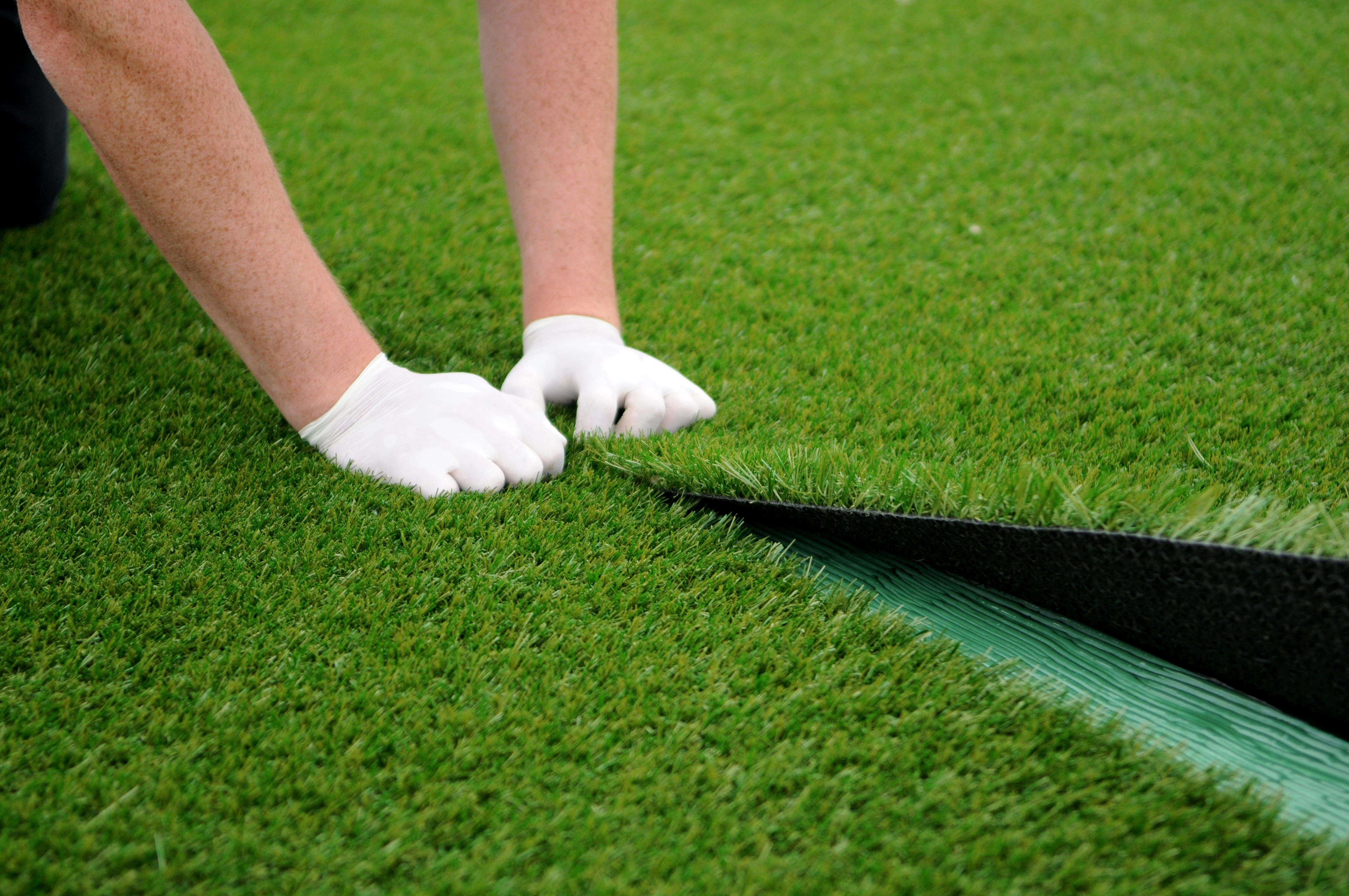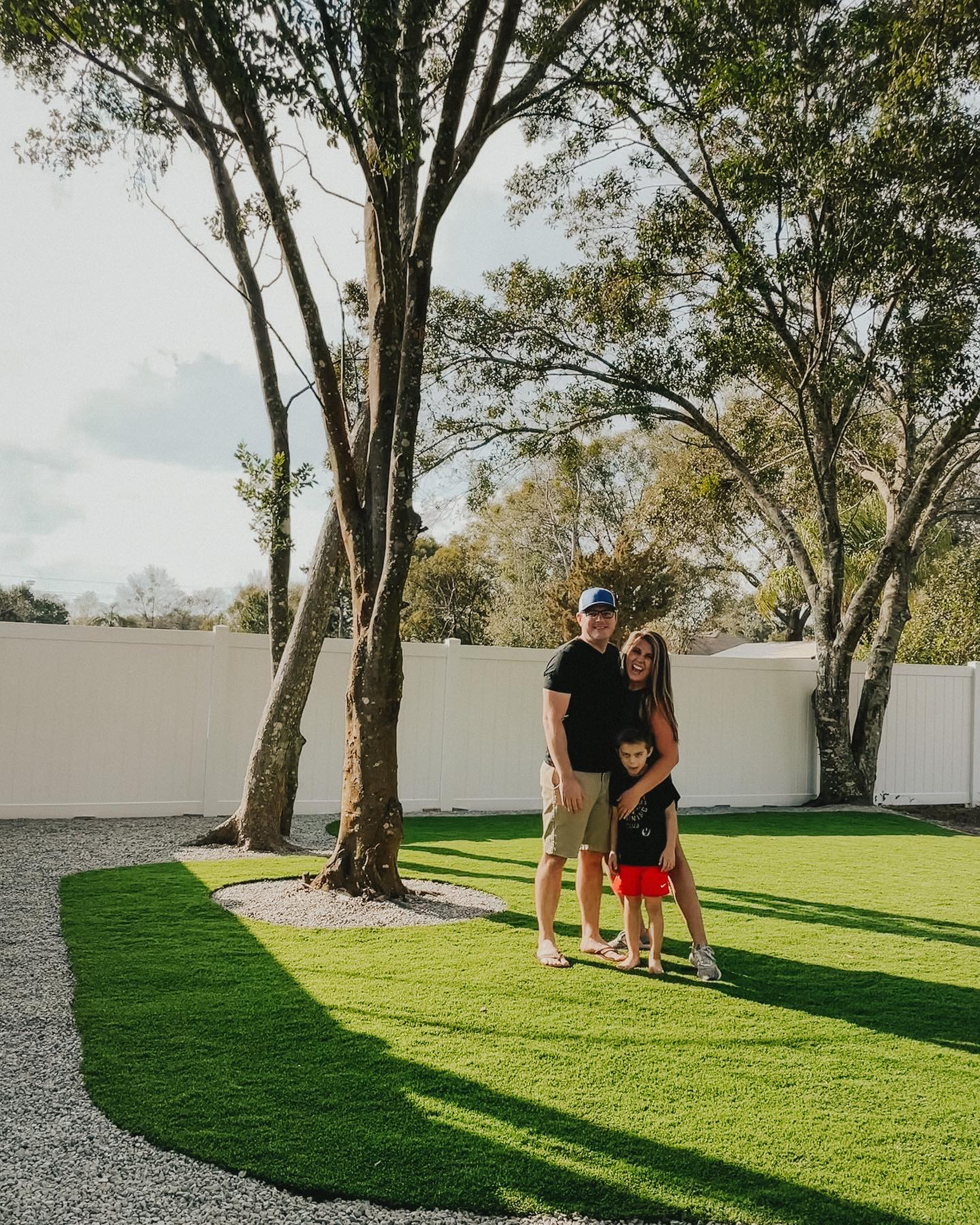Top Reasons to Consider Artificial Turf for a Low-Maintenance and rich Lawn
As home owners increasingly look for lasting options for exterior areas, man-made lawn provides an attractive option to standard grass. Its capacity to preserve a dynamic appearance year-round without the concerns of chemical, mowing, or watering therapies makes it a functional option for those aiming to reduce upkeep initiatives. The environmental advantages, consisting of significant water preservation and reduced reliance on chemicals, straighten with contemporary eco-friendly worths. Nevertheless, the advantages expand beyond mere visual appeals and sustainability; exploring the complex ramifications of synthetic lawn reveals a comprehensive approach to yard monitoring that advantages deeper factor to consider.
Year-Round Greenery
Among one of the most substantial benefits of fabricated yard is its capacity to give year-round plant, despite environment problems. Home owners often face challenges in maintaining a vivid grass as a result of seasonal adjustments, dry spells, or heavy rainfall. Artificial grass removes these worries, making sure a constantly rich appearance throughout the year.
This synthetic choice is crafted to withstand diverse weather condition situations, from burning summer season warmth to freezing winter months temperature levels. Unlike natural grass, which may brown or become uneven throughout extreme problems, man-made grass maintains its vivid color and texture, boosting the aesthetic allure of any type of landscape.
Additionally, artificial lawn is resistant to insects and illness that usually affect all-natural yards. This resilience adds to its enduring elegance, as there is no requirement for chemical treatments or plant foods that can be hazardous to the setting. Additionally, homeowners can take pleasure in the visual advantages of a well-maintained yard without the cyclical difficulties posed by natural yard care (artificial grass installation).
Decreased Upkeep Initiatives
Artificial lawn dramatically decreases upkeep initiatives, allowing house owners to appreciate an excellent grass without the taxing tasks related to all-natural yard treatment. One of the most significant advantages of artificial grass is the removal of routine mowing. Without requirement for a lawnmower, property owners conserve both time and the expense of upkeep connected with this tools.

Cleaning man-made grass is simple; a simple rinse with a pipe or the periodic brushing to eliminate particles is typically adequate - backyard artificial grass. This convenience of care enables home owners to spend more time enjoying their exterior rooms as opposed to laboring over them. In recap, the lowered maintenance efforts linked with fabricated turf make it an enticing choice for those seeking an attractive, problem-free lawn
Water Preservation Benefits
The significant decrease in maintenance efforts related to man-made grass extends to water conservation, making it an eco-friendly choice for homeowners. Traditional grass need considerable amounts of water to remain lavish and lively, typically causing extreme water usage, especially in dry areas. On the other hand, synthetic turf gets rid of the demand for regular watering, considerably decreasing the general water usage in your backyard.
By choosing for synthetic turf, property owners can conserve thousands of gallons of water each year. This change not just benefits individual homes however also adds to more comprehensive ecological efforts focused on reducing water waste. In locations experiencing water shortage, the adoption of artificial yard can play a substantial function in reducing the effects of dry spell and making sure that important water resources are made use of a lot more efficiently.
Furthermore, the installment of synthetic lawn can help reduced community water need, profiting the area in its entirety. With growing awareness of ecological issues, picking artificial yard functions as a proactive step in the direction of sustainable landscaping, aiding to protect all-natural water sources while keeping an aesthetically pleasing outside space (backyard artificial grass). In summary, fabricated turf offers an engaging service for water preservation, aligning environmental duty with modern landscape design requirements

Pest and Allergic Reaction Decrease
A considerable advantage of setting up synthetic turf is its capability to decrease pests and allergens in exterior rooms. Conventional lawn lawns frequently act as reproducing premises for bugs such as insects, ticks, and ants, which can develop discomfort and health risks for family members and family pets. In contrast, synthetic lawn gets rid of the organic material that brings in these bugs, consequently considerably lowering their populaces in your backyard.
In addition, all-natural grass can nurture mold, pollen, and other irritants, which can activate allergies and respiratory system problems for delicate individuals. Synthetic turf supplies a cleaner environment, lowering the capacity for click to read allergenic responses. Unlike all-natural lawn, synthetic grass does not create plant pollen, making it an outstanding option for allergy victims seeking to appreciate their outdoor areas without the risk of flare-ups.
In addition, the lack of soil in synthetic grass means there is less dirt and dirt, more reducing air-borne allergens. This low-maintenance option not just boosts the aesthetic allure of your yard however additionally promotes a healthier exterior environment, enabling click here to read family members to appreciate their lawns without the continuous fear of irritants and insects. Thus, synthetic turf is a critical selection for those prioritizing convenience and health in their outside living rooms.
Long-Term Cost Cost Savings
Purchasing artificial grass can bring about substantial long-term expense financial savings for home owners. While the first investment may seem considerable, the economic advantages with time can be significant. Fabricated grass eliminates the need for regular yard upkeep expenses, such as mowing, fertilizing, and watering. Conventional lawns commonly need significant resources to maintain a lush appearance, particularly in areas prone to drought or severe weather.
Furthermore, the durability of artificial lawn even more enhances its cost-effectiveness. The majority of top quality artificial grass products can last 15 to 25 years with minimal maintenance, minimizing the requirement for replacement or extensive repair work. On the other hand, all-natural turf may call for regular reseeding and normal treatment, which can rapidly build up in prices.
Utility financial savings are another critical variable. House owners can expect to see reduced water bills, as artificial grass does not need watering. Furthermore, the decrease in yard that site treatment services can liberate useful time and resources, permitting property owners to allot their budget plans in other places.
Final Thought
In recap, artificial turf provides countless benefits for homeowners looking for a vivid and low-maintenance landscape. Eventually, the lasting price financial savings associated with synthetic grass solidify its standing as a lasting and sensible service for improving outside areas.
Fabricated yard dramatically reduces maintenance initiatives, permitting homeowners to delight in an excellent yard without the lengthy tasks associated with natural turf care.The significant reduction in upkeep initiatives linked with fabricated yard expands to water preservation, making it an ecologically friendly option for home owners. In contrast, artificial grass removes the demand for routine watering, considerably minimizing the general water usage in your yard.
In locations experiencing water shortage, the adoption of fabricated yard can play a substantial function in mitigating the results of dry spell and guaranteeing that useful water sources are utilized extra effectively.
With growing recognition of environmental issues, picking synthetic grass offers as a proactive action in the direction of lasting landscaping, aiding to protect natural water resources while maintaining an aesthetically pleasing outdoor space.